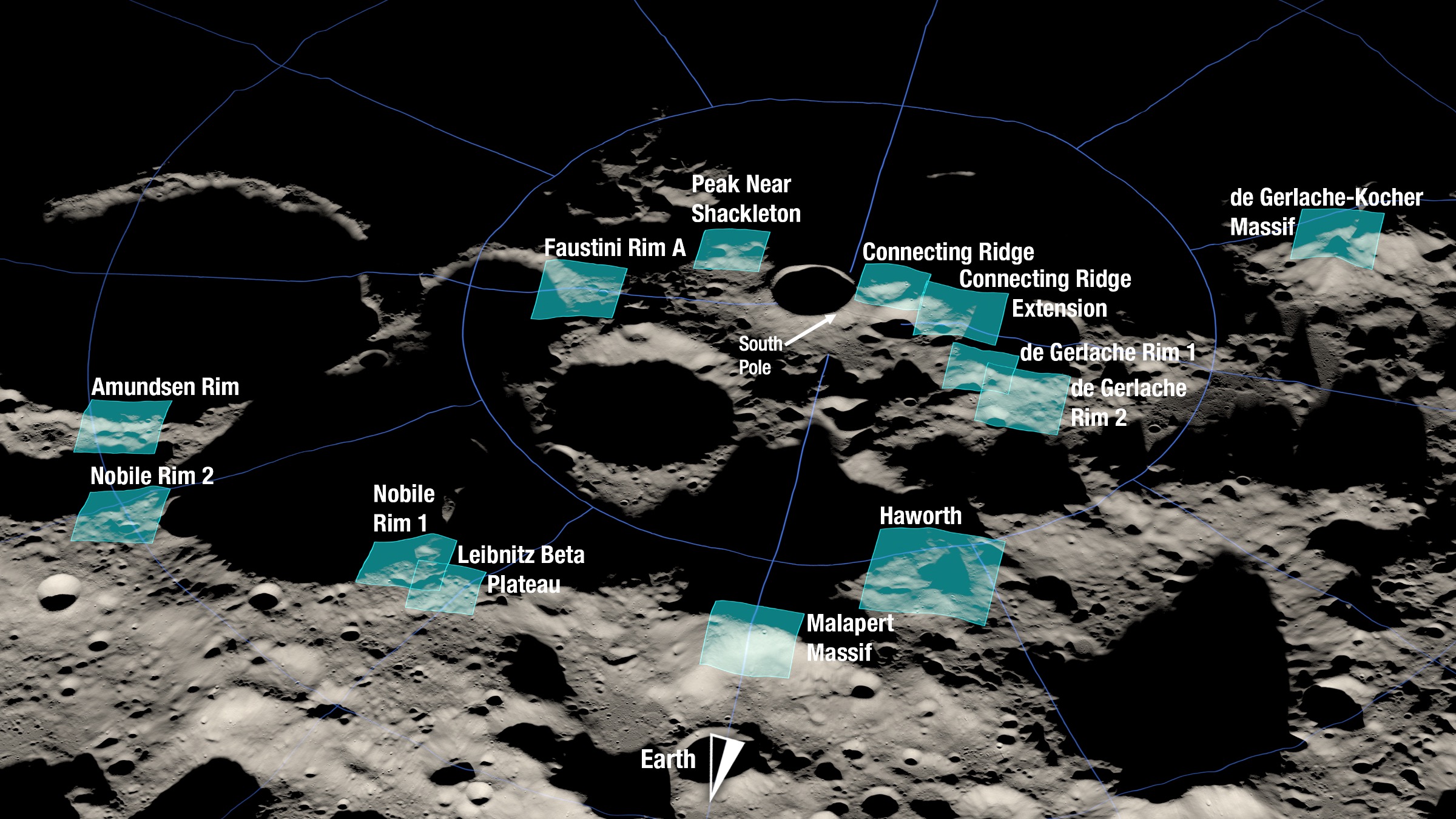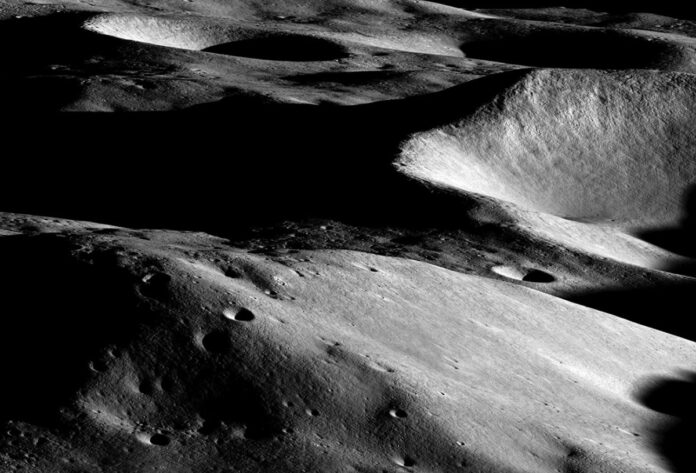A recent photo from lunar orbit shows off a potential location for humanity’s next footprints on the surface of the moon.
NASA’s Lunar Reconnaissance Orbiter (LRO) launched in June 2009 and has been providing great looks at the moon ever since. Among the probe’s seven instruments is the LRO Camera (LROC), which snaps high-resolution black-and-white imagery of the lunar surface.
On March 3, as LRO flew over Shackleton Crater near the moon’s south pole, LROC captured a photo with part of the Malapert Massif area in view. Malapert is one of the potential landing sites for NASA’s crewed Artemis 3 mission, which in 2025 or thereabouts will put astronauts down on the lunar surface for the first time since 1972.
Related: NASA’s Artemis 3 moon-landing astronauts will explore 1 of these 13 lunar locales
In the image, which was released on the LROC website, a full panorama shows a peak 16,400
feet (5,000 meters) high, with a dark, flatter area at its top. This is one of Artemis 3’s potential destinations. Relatively nearby, and visibly distinct from its taller neighbor, stands a 11,480-foot (3,500 m) cliff.
“One could argue that the sheer grandeur of this region makes it a prime candidate” for the Artemis 3 landing, LROC principal investigator Mark Robinson, of Arizona State University, wrote in a blog post describing the image (opens in new tab).
“But then again, a landing here might be too exciting?” he joked.
NASA scientists have chosen the south polar region for humanity’s return to the moon because of the abundance of water ice there. That water ice is a valuable resource for future moon explorers: it can be converted into things like rocket fuel, coolants or just plain life-sustaining water.

With its Artemis program, NASA hopes to establish a long-term presence on the moon to serve as a springboard to future crewed missions to Mars. Artemis 1, an uncrewed test flight of Artemis’ flight hardware, including the Space Launch System (SLS) rocket and Orion spacecraft, launched in November of last year, sending Orion on a 25-day flight to lunar orbit and back.
Artemis 2 is scheduled to launch in November 2024, sending four astronauts aboard SLS and Orion on a 10-day flight around the moon and back. NASA’s crew assignments for Artemis 2 are expected to be announced April 3. Artemis 3 will launch no earlier than December 2025 and will carry the first woman and first person of color to the lunar surface, according to NASA.
Follow us on Twitter @Spacedotcom (opens in new tab) and on Facebook (opens in new tab).

